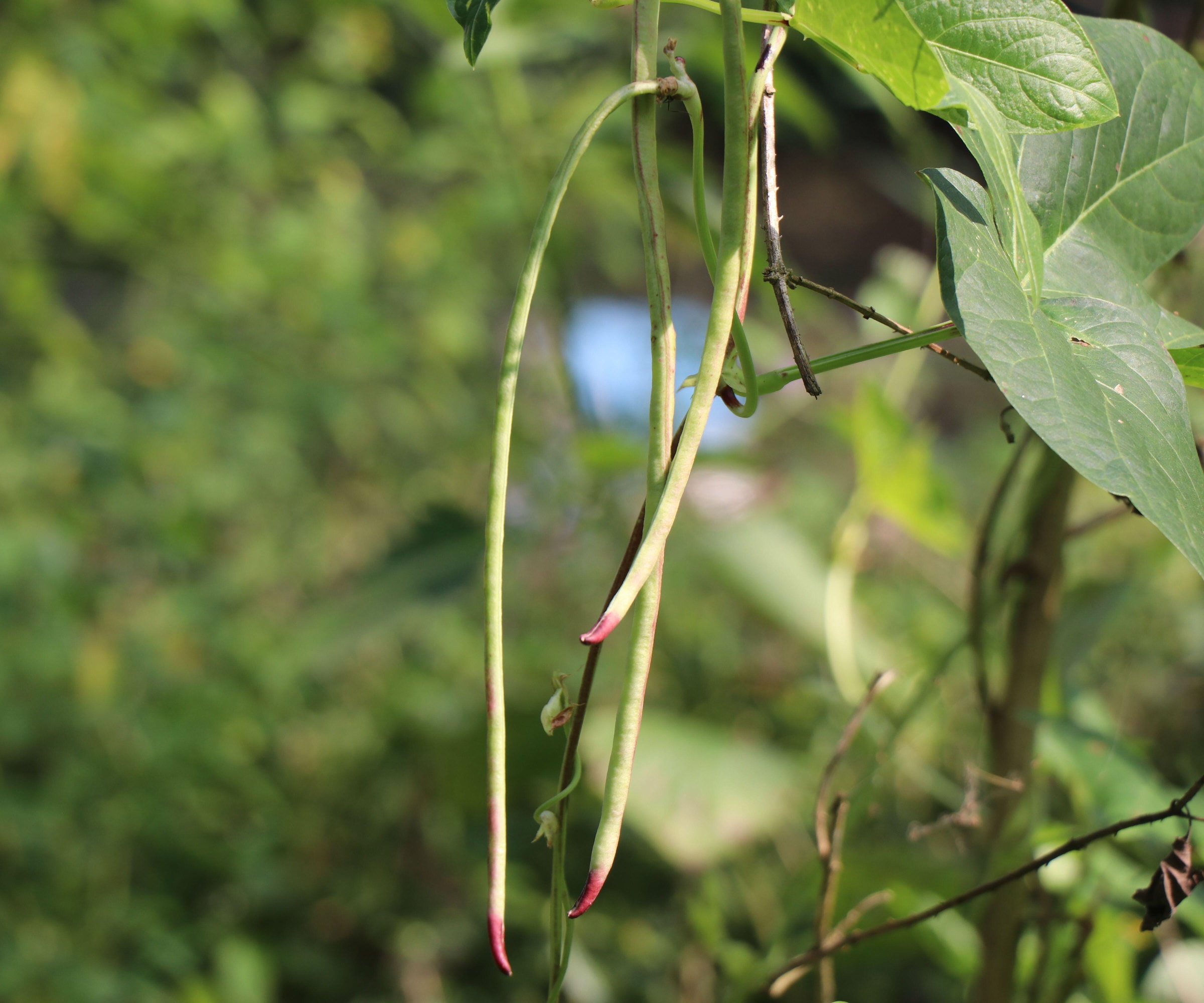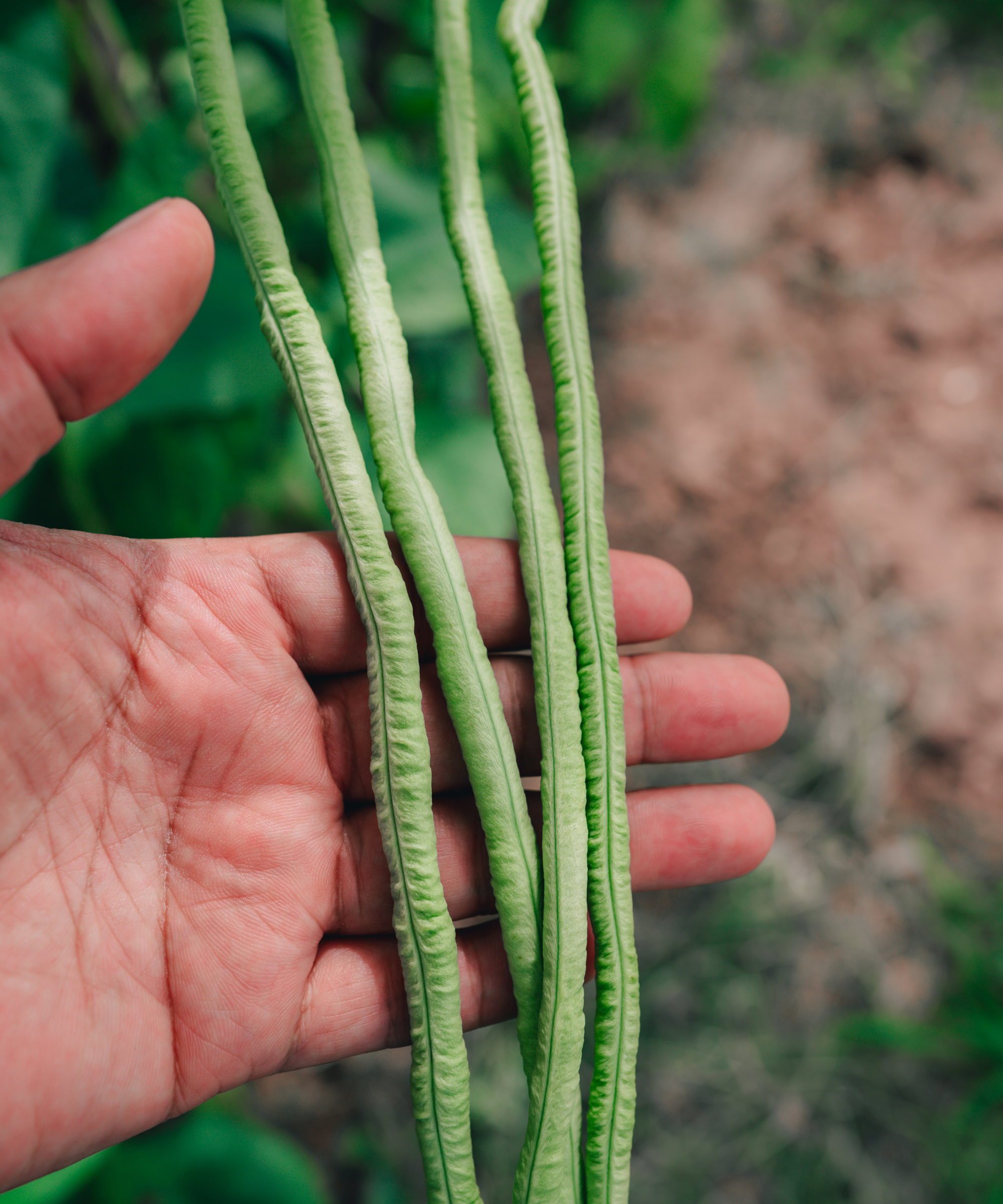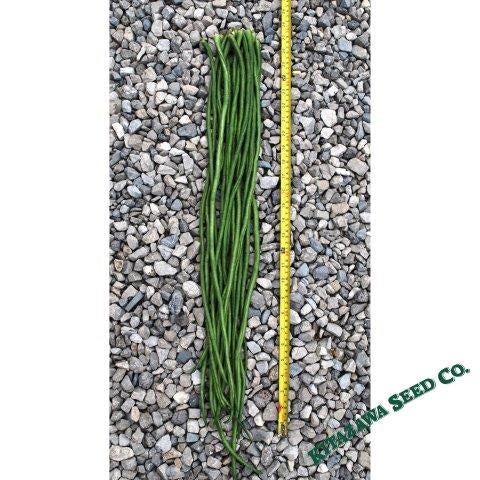How to grow yardlong beans – and get a bumper harvest with our expert guide
Impress your family and friends with stunning, super-sized beans


Yardlong beans are a crop named for their size. While they may not reach exactly a yard long when you pick them, you can enjoy a plentiful harvest of nutritious and tender beans by adding this unique vegetable to your growing plans.
If you are looking for a new vegetable to plant, or an alternative legume to growing french beans or runner beans, yardlong beans are highly recommended and versatile plants that are simple to grow.
Yardlong beans are easy vegetables to grow from seed in spring. The plants love sun and want support as they produce fast-growing vines. If you want to learn how to grow yardlong beans, our guide looks at everything from sowing to harvesting and reveals expert tips from an experienced master gardener.

What are yardlong beans?
Yardlong beans (Vigna sesquipedalis) are a legume crop also known by many other names, including asparagus beans, pea beans, snake beans, and Chinese long beans. The crop is grown for the long edible bean pods that can be eaten raw or cooked. They are common in Chinese and South-East Asian dishes - where the crop originates from - and the beans are packed with vitamins and nutrients.
How to grow yardlong beans from seed

Yardlong beans are simple crops to grow from seed in spring after the last frost. However, one particular method is advised for a successful crop. While many vegetables are started indoors earlier in spring, and seedlings transplanted outdoors, this is not recommended for propagating yardlong beans. Directly sowing seeds outdoors is ideal for growing bean crops, and worth remembering if you are growing lima beans, soybeans, and many other legumes.
‘Yardlong beans prefer to be directly sown into the garden. They have shallow root systems that don’t transplant well, so it's best to avoid starting them indoors,’ advises Angela Judd, master gardener and founder of Growing in the Garden.
‘They are a warm-season crop. Wait until after the last frost, when the soil has warmed to at least 50˚F (10˚C). Plant the seeds about 1 inch (2.5 cm) deep and space them 3-4 inches (7-10 cm) apart.’
Design expertise in your inbox – from inspiring decorating ideas and beautiful celebrity homes to practical gardening advice and shopping round-ups.
To help boost the plant’s growth, seeds can be coated in a nitrogen-fixing inoculant - commonly available in garden centers or online - before planting yardlong beans. Keep the seeds consistently moist, but not waterlogged, for good germination and thin seedlings to 6-8 inches apart as they appear.
Shop yardlong bean seeds
Where to plant yardlong beans

Picking the right spot for planting yardlong beans can make all the difference to the potential success of your crop. Angela Judd claims that ‘full sun is crucial’ and planting this vegetable in the shade can reduce your harvest. However, growers in warmer US hardiness zones may benefit from planting yardlong beans in part-shade.
‘Choose a location with at least 6-8 hours of direct sunlight,’ says Angela. ‘In hot climates, a spot that offers shade during the hottest part of the day can help prevent plant stress. These heat-loving beans grow best when the air temperature is between 77-95˚F (25-35˚C).’
Planting yardlong beans in a rich, fertile, and well-draining soil type will ensure happy and thriving crops. They prefer a soil pH of 5.5-7.5 and mixing in organic matter, such as compost or well-rotted manure, will provide all the nutrients the plants need for the season.
To help boost your yield, and reduce the risk of soil-borne diseases, avoid planting yardlong beans in the same space where other legumes were grown in the previous year as part of a crop rotation. Legume plants add nitrogen to the soil, so another reason to rotate them around the vegetable garden is that it benefits other crops that follow them in the rotation.

Since becoming a Master Gardener in 2015, Angela has been on a mission to help others grow thriving gardens through her website, classes, and YouTube channel. She is passionate about helping gardeners transform their tough growing conditions into gardening successes.
Caring for yardlong beans

Yardlong beans are vigorous climbing plants and are best grown up a vegetable garden trellis or other structure to climb and support themselves. The plants can reach 10-12 feet and will climb themselves, however, check the plants regularly in case they need to be trained to the supports.
The trellis needs to reach at least seven feet in height - going much higher can make harvesting more difficult - and is best put in place at the time of planting to avoid disturbing the roots of the plants later. An advantage to such vertical gardening is that the crops don’t take up much ground space - making them suitable for small vegetable garden ideas - and the beans are raised away from pests and easier to harvest.
‘Consistent moisture is vital for healthy plants,’ advises Angela Judd. ‘Water deeply once a week, increasing the frequency in hot, dry weather.’ Water the base of the plants, rather than soaking the foliage, to reduce the risk of fungal diseases and avoid overwatering, which can cause root rot.
Additional fertilizing is not required if you add organic matter to the soil ahead of planting yardlong beans. The nutrients from the organic matter, coupled with the plant’s nitrogen-fixing properties, are enough for the growing season. Any additional fertilizer, if required, needs to be higher in phosphorus and potassium, rather than nitrogen-rich.
How to harvest yardlong beans

Yardlong beans take around two months to go from sowing the seeds to harvesting the beans. ‘Although they’re often called yardlong beans, you should harvest beans for the best flavor when they are about 10-12 inches (25-30 cm) long,’ says Angela Judd. ‘Pick them while they are still slender and before the seeds inside fully develop.’
The plants are vigorous and will need to be picked regularly, even daily in the height of the harvesting season. The beans are best picked when still tender and the production of new beans will slow down if older ones mature on the plant.
It is recommended to snip or twist the beans from the plant, rather than pulling them - which can be a harvesting mistake that may damage the plants. Pick little and often to keep the beans coming and have a long harvesting season.
FAQs
Can yardlong beans be grown in pots?
Growing yardlong beans in pots as part of a vegetable container garden is possible. The container must be large to contain the plant’s large root system.
For example, a container 12 inches wide and 10 inches deep is sufficient for two plants. Fill the container with a fertile potting medium, like this potting mix on Walmart, and install a trellis for support before direct sowing the seeds. Keep the soil moist and place the container in a sunny spot for the plants to thrive.
Planting yardlong beans in containers will require additional fertilizing throughout the season. Use a feed high in phosphorus and potassium, such as one for growing tomatoes, once the flowers form to boost the development of the beans.
Mexican bean beetles can pose a problem for all kinds of legumes. A great way of combatting the pests is through companion planting, with garlic, marigold, rosemary and nasturtiums known to repel Mexican bean beetles. Planting pollen-rich plants can also be a method of natural pest control to attract some of the beetle's natural predators.

Drew has worked as a writer since 2008 and was also a professional gardener for many years. As a trained horticulturist, he worked in prestigious historic gardens, including Hanbury Hall and the world-famous Hidcote Manor Garden. He also spent time as a specialist kitchen gardener at Soho Farmhouse and Netherby Hall, where he grew vegetables, fruit, herbs, and cut flowers for restaurants. Drew has written for numerous print and online publications and is an allotment holder and garden blogger. He is shortlisted for the Digital Gardening Writer of the Year at the 2025 Garden Media Guild Awards.


